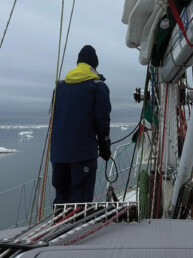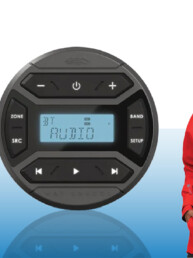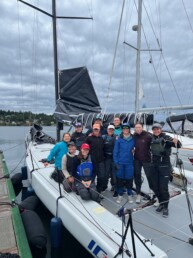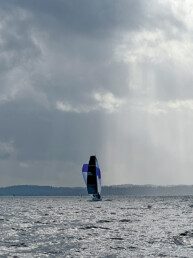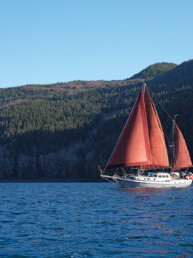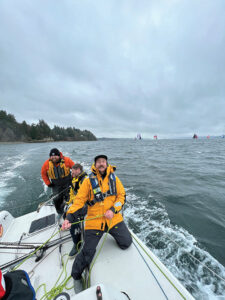
The Toliva Shoal race once again proved to be a fantastic event. The third stop of the Southern Sound Series, this race traditionally begins and ends in Olympia. It brings sailors 38 miles out through Nisqually Reach before the turn for home at Toliva Shoal, with the return trip staying north of Anderson Island. This is one of my favorite races of the year.
Planning for this race usually shares attention between researching predictions for wind and current, and placing cars at various drop off points so you and your crew can get home quickly. This year, wind predictions looked a little bleak early in the week, so finding a good midway point to leave a car looked essential in case the race was shortened.
As they always do, the South Sound Sailing Society and Olympia Yacht Club provided excellent accommodations leading up to, during, and after the race. The Wednesday before, the club hosted a Zoom meeting with Bruce Hedrick — the local weather guru who does Bruce’s Briefs, which are an amazing tool. I learned a ton from this meeting, including the fact that the Pacific Northwest is used to teach meteorologists how to be humble, as it is very difficult to predict our weather correctly. While long range forecasts called for lighter air, those closer to the race showed that decent pressure would be present for at least half of the race. The forecast for dwindling breeze combined with a massive ebb tide during the second half of the race led the race committee to shorten the course at Johnson Point.
For Goes to 11, my Antrim 27, we brought out a full crew of six for some relief throughout the race, and also some extra hiking power, and we definitely needed it. The race started downwind with a great spinnaker run to Boston Harbor, then a fairly tight and puffy reach along Dana Passage.
Approaching Johnson Point on the outbound leg, the wind was clocking around and we were struggling to hold onto our kite, so we doused a little early. The early douse paid off as we rounded the point and started our upwind leg towards Nisqually. Conditions proved to be rather sporty and gusty. We watched as one boat broached so hard at the mark they did a 360. We thought they must have fouled someone, but it was just an epic round-up.
We had a great time holding off Tigger, a Flying Tiger 10, before the Nisqually mark, and rounded just ahead. From there, it was a tight reach with boat speed around 10 knots to the south end of Anderson Island where we were able to launch our kite again. We quickly started planing down towards Toliva Shoal. Our top speed for the day was 15.2 knots over ground, with one big wipeout just before the rounding mark.
There was plenty of fun action to watch as the breeze built. We looked on as several boats got completely overpowered when jibing on the downwind run, with one kite blown to smithereens on the east side of the course. After our broach just before the mark, we decided it was a good time to douse, and had a great mark rounding for the uphill slog back towards Olympia.
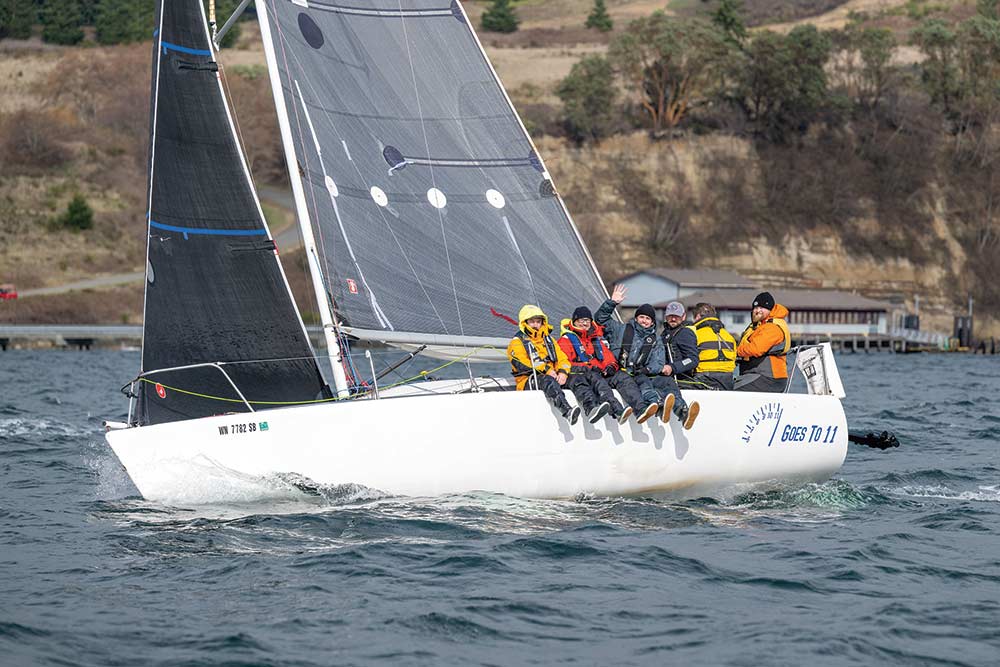
The race committee made an excellent decision to shorten the course at Johnson Point on the way back. The massive ebb was going to prove difficult regardless of wind conditions, and signs of the breeze dying were showing themselves.
Good times were had by all around the fleet. Class honors went to: F-32 trimaran Pax the Space Spider; Riptide 35 Terramoto, Jeanneau Sunfast 3600 Rush, Jeanneau SO 519 Equus, Olson 30 Sidewinder, Beneteau 35s5 Bodacious, Cal 40 White Squall, Ericson 38 Balder 2, and Catalina 320 Yonder Star. Goes to 11 finished second behind Sidewinder in Class PHRF-5. Great job everyone!
After the race, we again made it back to the club for soup and a few well-earned beverages. A huge thanks again goes out to the South Sound Sailing Society and Olympia Yacht Club for hosting the pre- and post-race parties, and of course a fantastic, well-run race.
Photos by Sean Trew and Jeremy Bush.
Jeremy Bush
Jeremy owns the Antrim 27, Goes to 11, which he races around south Puget Sound.

